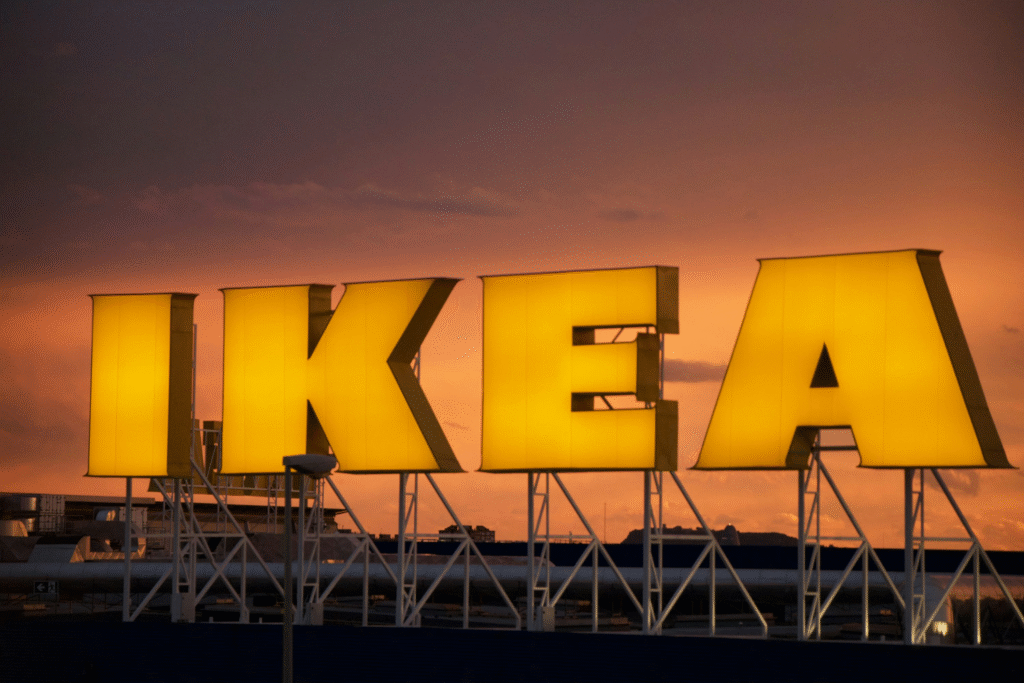IKEA’s sales have fallen for the second year in a row as the company continues to lower prices to help customers who are struggling with high living costs. Even though sales went down slightly, more people are visiting IKEA stores and buying products, showing that the brand remains popular worldwide.
“Sometimes, helping people means earning a little less,” said Jon Abrahamsson Ring, the CEO of IKEA’s parent company, Inter IKEA. These words perfectly explain IKEA’s situation this year. The world’s biggest furniture retailer has seen its yearly sales fall again — for the second year in a row — as it keeps cutting prices to make its products more affordable for families who are finding it hard to spend on home items.
IKEA, which became famous for its simple, affordable, and ready-to-build furniture, faced tough times after the COVID-19 pandemic. During the pandemic, the company had to raise prices because supply chains were broken, and it cost more to bring materials and goods to stores. But now, with inflation still high and people spending less on new homes or furniture, IKEA has chosen a different path — to lower prices again. Over the past two years, the company has reduced prices by about 10% on average.
This move has slightly affected its total sales, but it has also made more customers walk into its stores. For the financial year that ended on August 31, 2025, IKEA’s global retail sales fell by 1%, or 0.3% after adjusting for currency changes. The total came to 44.6 billion euros (around $51.9 billion). However, the story isn’t all sad. The number of products sold went up by 3%, and customer visits to stores also increased. In other words, people are buying more items — but at lower prices.

Jon Abrahamsson Ring explained the company’s thinking clearly. “One of the reasons we could take that decision was the fact that we are not on the stock exchange — we can be very long term together with our franchisees and decide that it’s most important right now to have better prices,” he told. This means IKEA doesn’t have to worry about short-term pressure from investors, like many public companies do. It can focus on what it believes is right for customers, even if profits fall for a while.
He added, “We do that because we see that people in all our 63 markets, their wallets are thinner right now and we see that consumer confidence for many years has gone down.” Around the world, many people are cutting back on spending because life has become more expensive. From food to fuel, everything costs more, and furniture shopping is often seen as a luxury. IKEA understands that and wants to help people continue making their homes comfortable, even in tough times.
But IKEA’s challenges don’t stop there. The company also faces problems in the United States, one of its biggest markets. The U.S. government has placed higher tariffs — or taxes — on imports, especially from countries like China. These tariffs increase the cost of furniture production and transportation. Yet, IKEA has not raised its prices in the U.S. despite these extra costs. Abrahamsson Ring said the company is trying to absorb these expenses to protect customers. “We have not come to that point yet, but it will maybe eventually come,” he admitted, suggesting that if tariffs continue to rise, IKEA might be forced to increase prices in the future.
In America, IKEA competes with companies like Wayfair and Walmart, which also sell home furniture. However, IKEA may have a slight advantage. A lot of its furniture is made in European factories, while many of its competitors depend heavily on Chinese imports that face higher tariff rates. Abrahamsson Ring pointed out that the trade agreement between the European Union and the U.S. helps IKEA manage costs better. “The agreement that today exists between the European Union and the U.S. … that at least gives us good predictability and we want that to stay consistent,” he said.
Even though global sales fell, IKEA remains hopeful. The Ingka Group — IKEA’s biggest franchisee that owns stores in 31 countries — also reported a small drop in sales this year. Its total sales went down by 1.6%, reaching 39 billion euros. The reason was again the same: price cuts. But like Inter IKEA, Ingka Group noticed that the number of products sold increased by 1.6%. This means customers are still buying — just more carefully and often choosing cheaper options. The group described its outlook as “cautiously optimistic,” meaning it sees positive signs ahead but is still careful about future challenges.
So, what does all this mean for IKEA’s future? The company is clearly betting on the long game. It believes that helping people afford furniture now will build stronger loyalty in the future. When economies improve and people have more money to spend, IKEA hopes they will remember the brand that stood by them during hard times.
At the same time, IKEA is working on making its operations more efficient. It continues to invest in renewable energy, digital tools, and smaller city-based stores that make shopping easier. The company also focuses on online orders, where customers can buy items from home and pick them up at nearby outlets or get them delivered. These efforts help reduce costs and attract new shoppers who prefer convenience.
IKEA’s story this year shows that business success is not only about profit numbers. It’s about understanding people’s needs. While some companies might increase prices to protect their earnings, IKEA chose to do the opposite. It decided to earn less money in the short term but win more hearts in the long run.
The path ahead isn’t easy. With global economic uncertainty, high interest rates, and trade tensions between countries, the company will have to keep balancing its prices carefully. If U.S. tariffs continue to rise, it might finally have to increase some prices. But for now, IKEA is standing firm — keeping its furniture affordable, its stores busy, and its customers happy.
As Jon Abrahamsson Ring summed it up, IKEA’s main goal is not just to sell furniture but to make life better for people around the world. And even though sales have dipped for two years, the company’s belief in helping people first remains stronger than ever.


